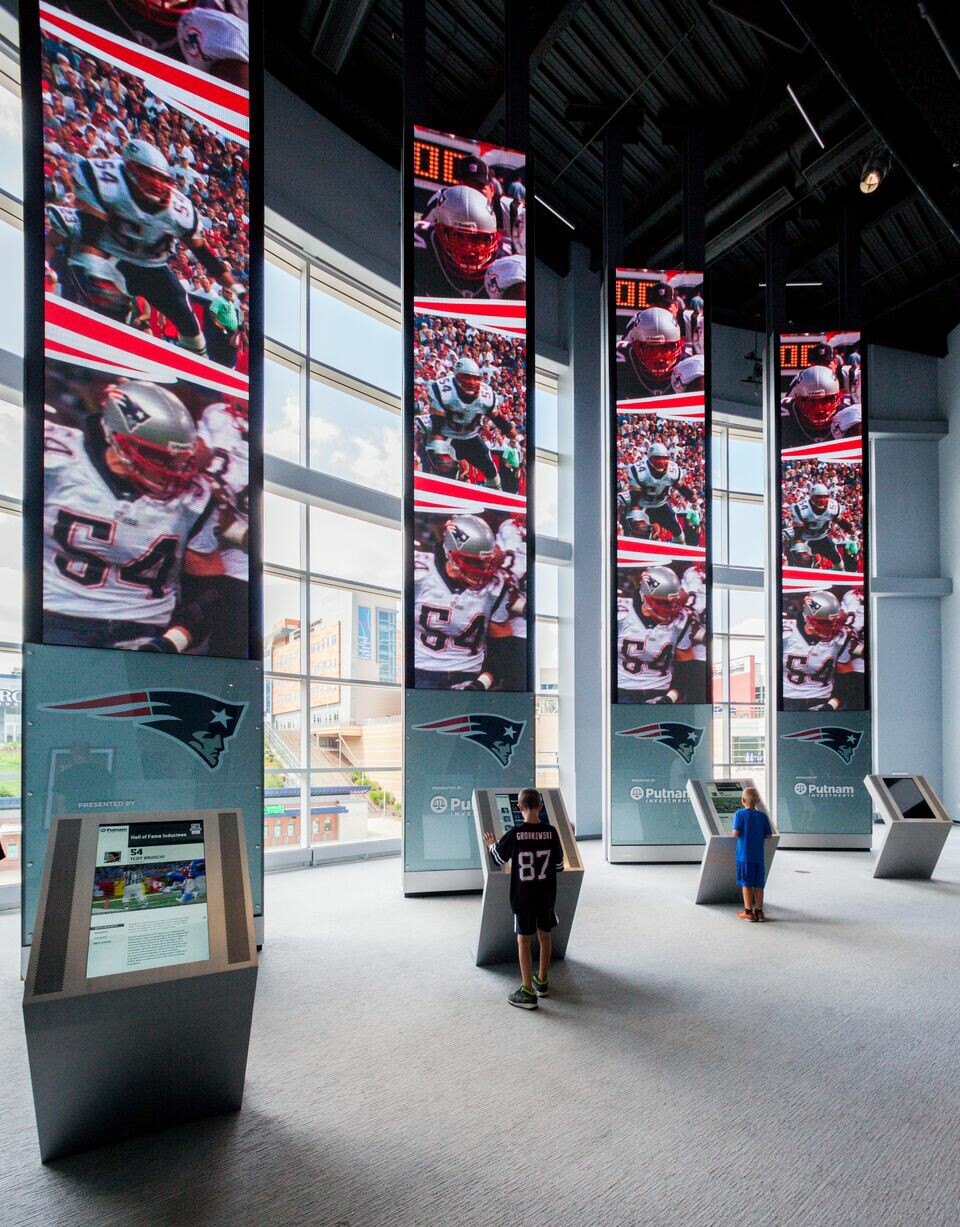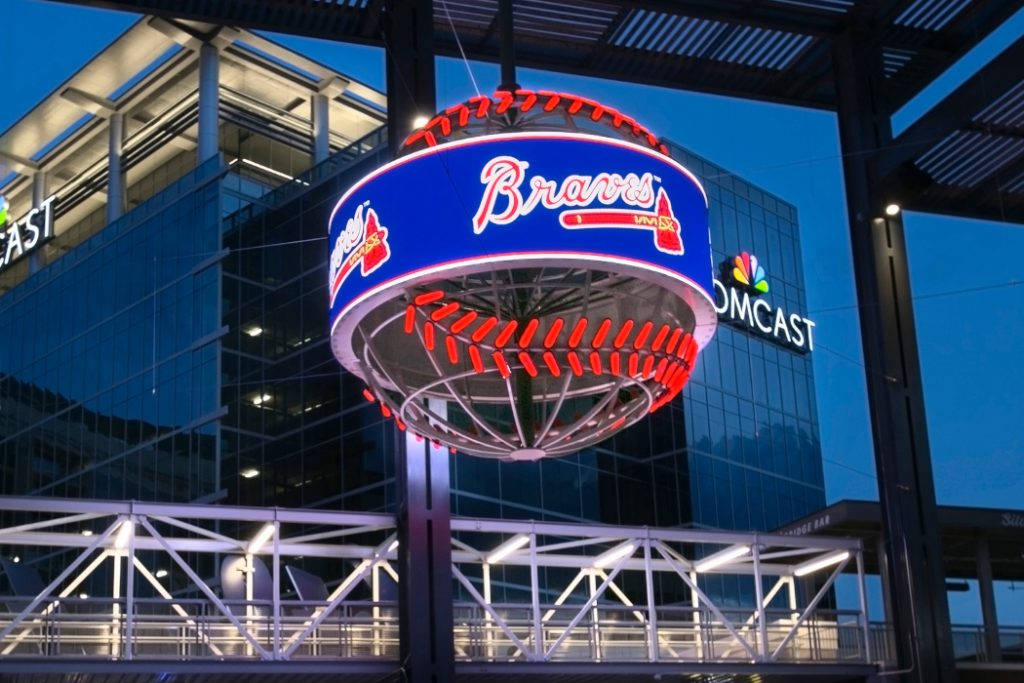It is nearly impossible to attend an event at a large stadium and not notice the jumbotron. After all, that’s kind of the point. But beyond their obvious size, brightness, and prominent locations within stadiums, jumbotrons attract the eyes of event-goers because they provide information and entertainment. Be it live game or event footage, exciting replays, relevant statistics, or any other kind of crowd engagement material, the content shown on a jumbotron provides value to its audiences. For years, these massive screens were the only element of a stadium’s digital display network. Nearly all other signage was static. Recently however, as relevant audiovisual technologies have become more dexterous, stadiums have started using smaller and more agile display tech to provide information and entertainment elsewhere in the stadium as well. Integrating these technologies is part of stadiums’ ever-broadening mission to create a more compelling fan experience.
Improving the experience they provide guests requires stadiums and other large event venues to continually evaluate the pain-points fans feel when they visit the facility. In most cases, they are not hard to identify. Fans routinely list long lines, confusing directions, and the unavailability of relevant information as their chief complaints, but fortunately for stadiums, each of these maladies can be (at least in part) remedied with AV technology. Let’s explore a few particular AV use cases to see how and why these proliferating technologies make a difference.

Streamlining Foot Traffic with Concourse Wayfinding
Jutting out into stadium concourse walkways to indicate the entrances to seating sections, wayfinding blades are a necessary element of any well designed stadium. As digital display technology proliferates, stadiums have begun to replace static blades with similarly-sized digital displays. This change dramatically increases the distance from which fans fan can spot the blades and thus find their seating section. Once identifying their destination, fans move more purposefully and efficiently, improving their experience and freeing up the concourse walkways for others. Stadium concourses can feel like a maze to guests unfamiliar with the layout and stadium staff naturally want to eliminate that confusion. Digital wayfinding blades are a useful tool in that endeavor as they require almost no human resources once set up.
Creating A Unique Fan Experience
Consumers that attend an event and are met with an efficient, energetic, and exciting stadium experience will become fans for life. With high-end AV technologies, stadium executives are finding new ways to optimize fan experience and thereby strengthen the connection fans feel with their location. One fruitful success story here can be found in Atlanta GA.
Departing their beloved Turner Field for SunTrust Park prior to the 2017 season, the Atlanta Braves needed a centerpiece to imbue team history into their new home ballpark. Hoping to connect with younger fans in particular, the team installed a gigantic digital baseball suspended 30 feet above the central throughway in their stadium-adjacent fan village. The magnificent AV feature is wrapped with a seven-foot tall digital display that the team uses to showcase sponsored content and live game streams. The feature is one of the most iconic symbols of the new park and has established a meaningful place in the next generation of Atlanta Braves baseball.
Brightening Concessions And Generating Ad Revenue
Beyond their aforementioned value to fans, smaller scale AV technologies can provide immense utility to on-site concessionaires and retailers, as well. Studies have borne out the stark difference in customer interest between static and digital signage, and stadiums certainly have no shortage of customers. When on the hunt for a hotdog or a team jersey, a customer is going to drift to the sales site with the most vibrant AV features. Why? Well, for one thing, their location is easier to see. Stadiums are busy places but the bright lights of an LED display will stand out anywhere. For another, technological investment in appearance is attractive. Customers care about presentation.
Advertisers can get in on this AV action as well. Alternating team- or event-centric content with outside promotions can help stadiums recoup some of their investment on the technology while tying their team brand to eager corporate sponsors. Many AV features actually allow buyers to pay for the tech as a service, who then turn around and sell their display space to advertisers. Arrangements like this can generate a positive ROI immediately upon install.
As televisions have advanced, large portions of the viewing public have opted to watch sporting events from home rather than trek to the stadium for what they believe might be a sub-par experience. There’s nothing quite like the roar of a live crowd, but fans are willing to miss out on that if the accompanying stadium experience is lousy. Stadiums (and the teams who use them) have finally recognized this disparity between on-field product and the associated concourse experience and have begun an AV revolution to remind fans why live events are worth going to. So head to the stadium, or arena, or ballpark and take a look around; the lights are brighter than ever.
